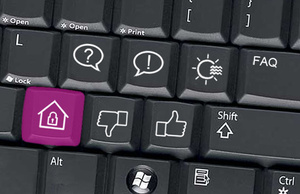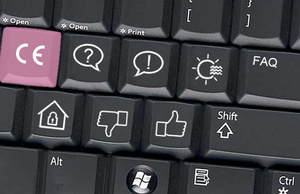Noise barriers along roads must be CE marked according to EN 14388 – regardless of whether they are made of wood, aluminium, glass or plastic. The only exception to the CE marking requirement is barriers built on site from loose timber. However, if the elements are produced in the factory, the barriers must be CE marked.
Who is responsible?
What happens when the descriptions in the tender documents are vague or non-existent? Even if the client or information in the procurement documents does not specify that the barrier must be CE marked, this is an indispensable requirement that builders and suppliers must fulfil according to current legislation – and it is not allowed to mount non-CE marked barriers.
What does CE marking mean?
CE marking means that products have been tested or calculated on the basis of established conditions.
Is CE marking a guarantee for quality?
The fact that a noise barrier is CE marked does not automatically mean that it is a quality product or that it fulfils the requirements the client wishes to comply with. The point of the CE standard is to make it easier to set requirements, as all products have been tested or calculated according to the same criteria, but the requirements must be specified in order to be meaningful in relation to the product being delivered.
Do noise barriers have to be CE marked?
Yes.
Is it allowed to install non-CE marked noise barriers?
No.
Are there any exceptions?
Yes. A loose timber barrier built on site does not need to be CE marked. However, if the elements are produced in the factory, the barriers must be CE marked.
Who is responsible for ensuring that the product is CE marked?
Client and suppliers.
Which standard specifies the CE marking requirements?
CE standard EN 14388.
What specifications does the standard EN 14388 contain?
The CE standard EN 14388 consists of 14 different standards, each of which contain different levels or grades and the associated test procedure and/or declarations. The client should set requirements for most of these. It is important that the client or regulatory authority specifies the desired level within the respective standard. There is ongoing work to improve standard EN 14388, but so far the latest approved revision in force is from 2003.
How can descriptive texts be made clearer?
A CE marked noise barrier can be compared to a car. If performance requirements are not set, it is impossible to compare and know what the purchase entails. The client should set requirements for most of the 14 standards included in EN 14388. In some cases - for example, "The barrier must be able to withstand impact of stones" - there is only "Approved" or "Not approved", but requirements, according to which the barrier must pass the test, must be imposed.




